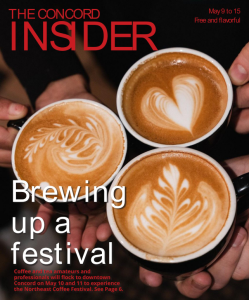“Death’s Summer Coat: What the History of Death and Dying Teaches Us About Life and Living”
By Brandy Schillace
(266 pages, Adult Nonfiction, 2016)
Dr. Brandy Schillace — historian and Public Engagement Fellow at the Dittrick Museum of Medical History—has made a career out of studying slightly uncanny topics. Like authors Mary Roach and Dr. Lindsey Fitzharris—both cited frequently in “Death’s Summer Coat” — Schillace believes that shining a light on taboo topics can help humans to process psychologically daunting subject matter. In this book, she tackles perhaps the most daunting topic of them all: human mortality.
Schillace takes an anthropological approach to death, walking readers through the various ways that humans have handled the loss of life across temporal and geographic barriers. While death itself is universal, there is almost no end to the different ways that people (as groups or individuals) put their affairs in order, deal with terminal diagnoses, dispose of bodies, or grieve the loss of loved ones. In Victorian England, for instance, mourning was a socially choreographed affair lasting multiple years and marked not just by black clothing but by extremely detailed changes in garment style and fabric type. Tibetan Buddhists, on the other hand, are known for “sky burials,” where the dead are cut into tiny pieces and left on a mountain top to be consumed by carrion birds. Some cultures eat the bodies of their deceased friends and family; some disinter dead relatives and spend time with the corpses as though they were alive; and some spend hefty sums on embalming, perhaps hoping to cheat the finality of death by outwitting nature with science.
One reason I enjoyed this book is that Schillace raises some really interesting philosophical questions about what it means to be human, particularly in our modern era. For instance, with medical technology increasingly prolonging the human lifespan, what is the appropriate role of doctors today: is it to delay death for as long as possible, or to act as “death’s midwife,” helping patients to make their last, final transition as comfortably as possible? What does a “good death” look like, and how can we make it happen for ourselves and our loved ones? Is there a “right” way to grieve, and who made that decision? Is cadaver dissection still necessary for medical training, or can we teach today’s medical residents with simulations and models—and what is lost, for both doctor and patient, if dissection becomes taboo? Are death cafes and death salons simply fads, or does their growing popularity portend a new era of death positivity in the West?
This is not a book for the faint of heart. I will mention that there are black and white photographs of human remains, as well as mention of practices that would be considered unusual in our current time and place (such as ritualistic cannibalism, or wearing jewelry made of a deceased loved one’s hair). Schillace simply asks us to suspend judgement and to keep an open mind. Loss and mourning are universals, yet their expression is as varied and complex as the many different communities across the globe. In fact, aside from birth, death is the fundamental human experience. We can wait for it with fear and revulsion, or we can anticipate and embrace the inevitable through mindful decisions today. It’s up to us—and this book is a wonderful wake-up call in that regard.
Visit Concord Public Library at http://www.concordpubliclibrary.net
Faithe Miller Lakowicz






















